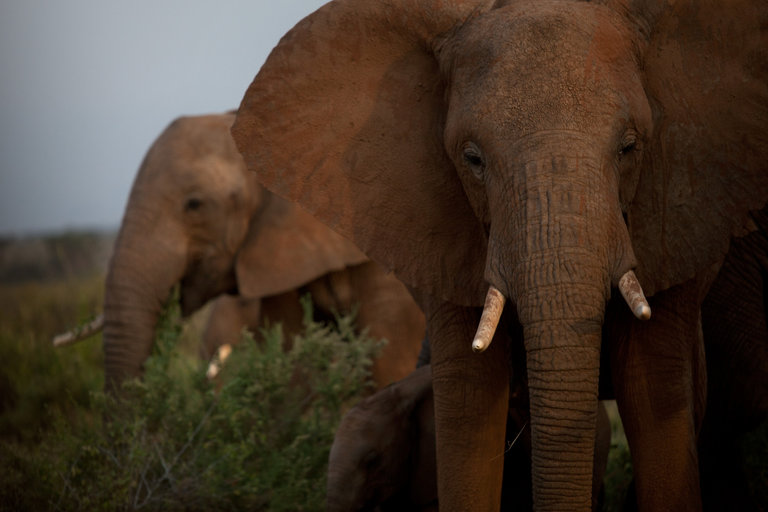China Joins the Fight to Save Elephants
ANIMAL RIGHTS - VEGETARIANISM, 9 Jan 2017
The New York Times | Editorial – TRANSCEND Media Service
3 Jan 2017 – It is great news for elephants that China has declared a halt to commercial ivory trade by the end of 2017. China’s huge appetite for ivory — the combination of an ancient tradition of ivory carving and a swelling middle class ready to pay for it — was by far the driving force behind soaring demand for elephant tusks and, tragically, a dangerous escalation in the slaughter of African elephants. But before the celebrations begin, several cautionary notes are in order.
First, China’s decision was not entirely altruistic. As Javier Hernández, a Times reporter, wrote from Beijing, there were also political benefits for President Xi Jinping. The ban strengthens his campaign against corruption, in which ivory is a currency; it improves his standing in Africa, where China has major interests; and it enhances his image as an environmentally responsible leader. There’s nothing wrong with any of that; on the contrary, it demonstrates that China’s leadership recognizes the responsibilities that come with China’s global power and influence.
The more important question is how strictly China will enforce the ban. In principle, the closing of the Chinese market, which has accounted for 50 to 70 percent of illegal ivory, will go a long way toward extinguishing the traffic in ivory. But Beijing has often been lax in following up on worthy decisions, and any illicit trade as lucrative as ivory could easily sneak through any cracks. Another danger is that, once China vacates the market, Asian countries such as Vietnam, Myanmar or the Philippines could try to move in.
Trafficking in elephant tusks has survived decades of bans and campaigns. Global ivory trade was banned in 1989 under the Convention on International Trade in Endangered Species of Wild Fauna and Flora (Cites), and African nations have made considerable efforts to combat poaching. But the ban had many loopholes, and so long as there was a market where ivory was fetching $2,100 per kilogram ($952 per pound), the poachers and smugglers had ample incentive and resources to bribe officials and kill rangers.
The continuing slaughter of African elephants was starkly confirmed in August when the results of a major census were reported, showing that one-third of savanna elephants were killed between 2007 and 2014. Basically, elephants have been headed for extinction.
The campaign to halt the carnage was strongly bolstered by President Obama, who announced several measures on his 2015 visit to Kenya that effectively banned American commercial trade in ivory. Mr. Obama’s discussions with Mr. Xi were also instrumental in encouraging China’s decision to follow suit.
The campaign to save elephants does not stop here. The many governmental and nongovernmental organizations that have worked to protect the magnificent animals must now ensure that neither China nor the United States backslides on the bans, and that other nations will not try surreptitiously to move in.
_____________________________________
A version of this editorial appears in print on January 4, 2017, on Page A20 of the New York edition with the headline: China Joins the Fight to Save Elephants.
DISCLAIMER: The statements, views and opinions expressed in pieces republished here are solely those of the authors and do not necessarily represent those of TMS. In accordance with title 17 U.S.C. section 107, this material is distributed without profit to those who have expressed a prior interest in receiving the included information for research and educational purposes. TMS has no affiliation whatsoever with the originator of this article nor is TMS endorsed or sponsored by the originator. “GO TO ORIGINAL” links are provided as a convenience to our readers and allow for verification of authenticity. However, as originating pages are often updated by their originating host sites, the versions posted may not match the versions our readers view when clicking the “GO TO ORIGINAL” links. This site contains copyrighted material the use of which has not always been specifically authorized by the copyright owner. We are making such material available in our efforts to advance understanding of environmental, political, human rights, economic, democracy, scientific, and social justice issues, etc. We believe this constitutes a ‘fair use’ of any such copyrighted material as provided for in section 107 of the US Copyright Law. In accordance with Title 17 U.S.C. Section 107, the material on this site is distributed without profit to those who have expressed a prior interest in receiving the included information for research and educational purposes. For more information go to: http://www.law.cornell.edu/uscode/17/107.shtml. If you wish to use copyrighted material from this site for purposes of your own that go beyond ‘fair use’, you must obtain permission from the copyright owner.
Read more
Click here to go to the current weekly digest or pick another article:
ANIMAL RIGHTS - VEGETARIANISM:
